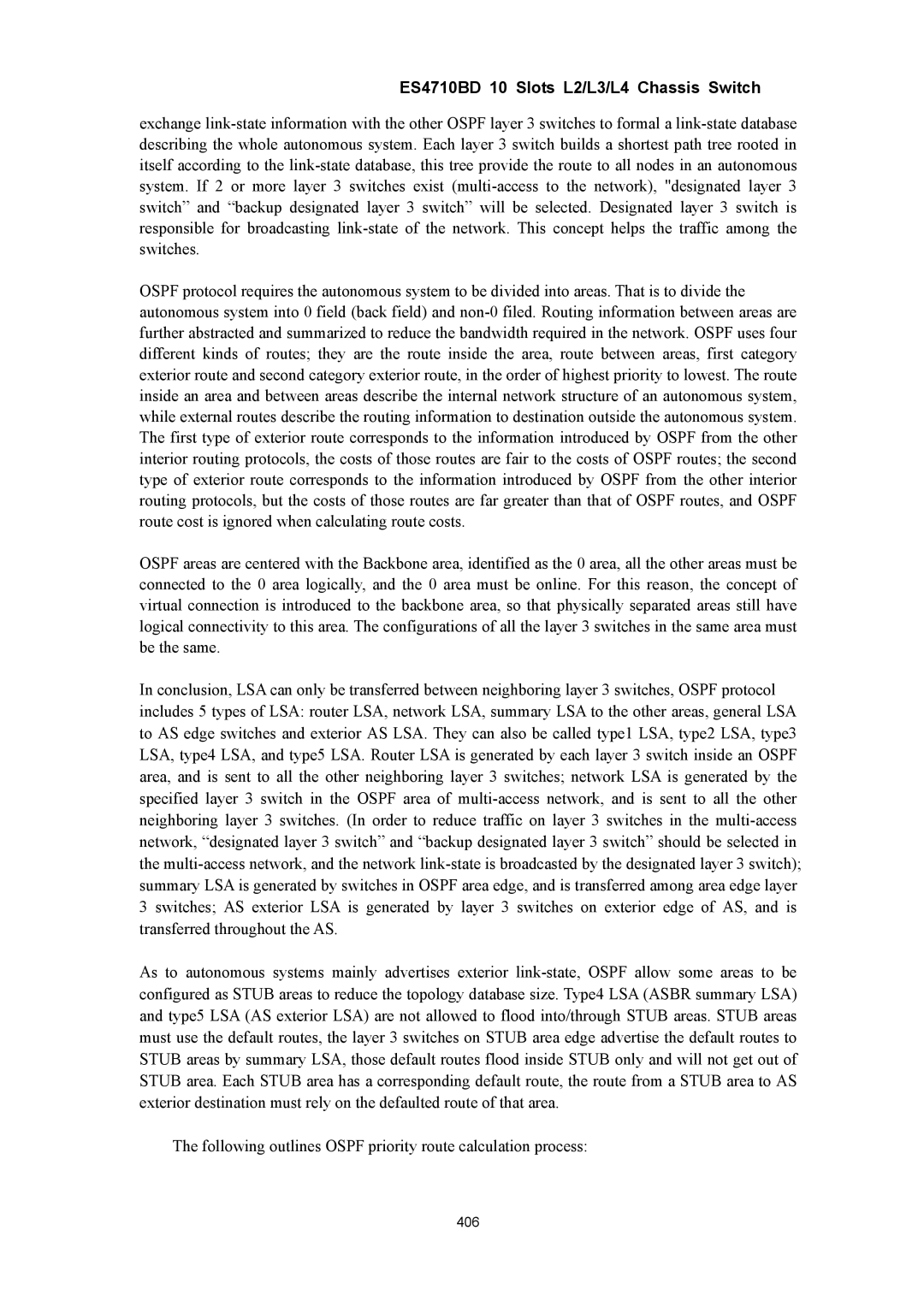ES4710BD 10 Slots L2/L3/L4 Chassis Switch
exchange
OSPF protocol requires the autonomous system to be divided into areas. That is to divide the autonomous system into 0 field (back field) and
OSPF areas are centered with the Backbone area, identified as the 0 area, all the other areas must be connected to the 0 area logically, and the 0 area must be online. For this reason, the concept of virtual connection is introduced to the backbone area, so that physically separated areas still have logical connectivity to this area. The configurations of all the layer 3 switches in the same area must be the same.
In conclusion, LSA can only be transferred between neighboring layer 3 switches, OSPF protocol includes 5 types of LSA: router LSA, network LSA, summary LSA to the other areas, general LSA to AS edge switches and exterior AS LSA. They can also be called type1 LSA, type2 LSA, type3 LSA, type4 LSA, and type5 LSA. Router LSA is generated by each layer 3 switch inside an OSPF area, and is sent to all the other neighboring layer 3 switches; network LSA is generated by the specified layer 3 switch in the OSPF area of
As to autonomous systems mainly advertises exterior
The following outlines OSPF priority route calculation process:
